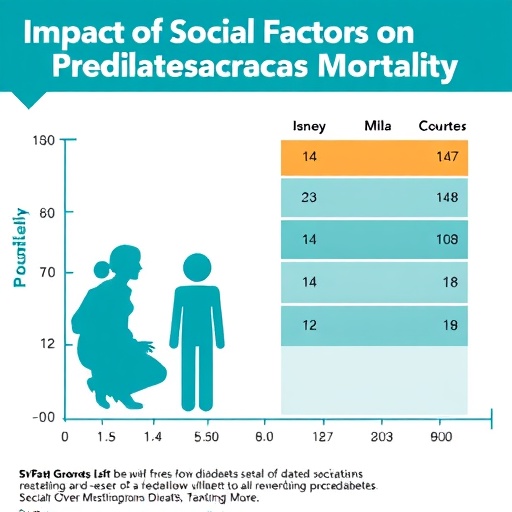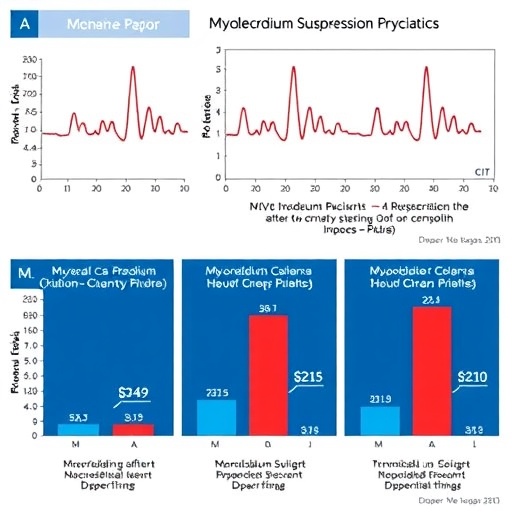In a groundbreaking study published in BMC Complementary Medicine and Therapies, researchers Prates, Soares, and Arrieiro explore the intriguing intersection of physical fitness and cognitive health through the lens of whole-body vibration (WBV) exercise. This innovative form of exercise has gained traction in recent years, especially among older adults seeking to maintain both physical and cognitive vitality. The study highlights the feasibility of incorporating WBV into regular exercise regimens, specifically focusing on its immediate effects on executive functions and physical capabilities in older adults exhibiting symptoms of probable mild cognitive impairment (MCI).
The rise in cognitive impairments, particularly among aging populations, poses a significant public health challenge worldwide. As more individuals reach advanced ages, the prevalence of MCI increases, emphasizing the need for effective interventions that can enhance both mental acuity and physical health. Traditional exercise programs have long been championed for their numerous benefits, yet the introduction of WBV offers a novel alternative that may appeal to those who find conventional exercise daunting or who are limited by physical constraints.
Whole-body vibration exercise involves standing, sitting, or lying on a machine with a vibrating platform that stimulates vibrations throughout the body. These vibrations force the muscles to contract and relax multiple times per second. This process not only mimics the effects of traditional weight training but also engages the body’s reflexive muscle systems, which can lead to improved strength, balance, and coordination. For older adults, the accessibility of WBV may reduce barriers to exercise, such as fear of injury or mobility limitations, making it an excellent option for those at risk for cognitive decline.
The researchers designed their study to assess the immediate impacts of WBV on various cognitive and physical measures in older adults with probable MCI. Participants were subjected to sessions of whole-body vibration, carefully monitored to ensure safety and efficacy. Employing standardized tests, the researchers evaluated outcomes related to executive function, which includes skills such as problem-solving, planning, and attention control, as well as physical performance metrics including strength and balance.
Initial findings suggest that participants experienced significant improvements in both cognitive and physical performance following the WBV sessions. This dual benefit is particularly noteworthy, as enhancing physical functioning can contribute to better overall health and potentially mitigate the progression of cognitive decline. Enhancing executive function, on the other hand, is critical for maintaining independence and quality of life in older adults. The study underscores that interventions like WBV could serve as valuable tools in the broader strategy for combating age-related cognitive impairment.
Critics often question the long-term sustainability of improvements gained through exercise modalities such as WBV. However, the immediate gains in cognitive and physical performance observed in this study indicate that WBV may act as a catalyst for older adults to pursue further physical activity, thereby fostering a more active lifestyle. This is particularly relevant in the context of addressing the psychological aspects of exercise adherence, where motivating factors can significantly influence the long-term success of any health intervention.
Furthermore, the researchers highlighted the importance of conducting future studies that examine the long-term effects of WBV on cognitive and physical functions. Follow-up examinations could provide deeper insights into how sustained engagement with whole-body vibration might influence the trajectory of cognitive decline in older adults. The potential for WBV to serve as a regular exercise regimen could not only improve health outcomes for individuals but also alleviate some societal burdens associated with aging populations and cognitive impairments.
Across the spectrum of geriatric health, the findings from Prates and colleagues emerge as a clarion call for the integration of innovative exercise modalities into health care practices. As the medical community seeks to harness the combined power of physical and cognitive health, the evidence gathered from this research provides a compelling case for further exploration of WBV. The implications for clinical practice are profound, positioning WBV as a distinct and accessible form of exercise that can be readily implemented across various settings, including rehabilitation centers, wellness programs, and even at home.
In conclusion, the study conducted by Prates et al. exemplifies not just the promise of whole-body vibration exercises for older adults with probable MCI, but also the crucial need for ongoing research into effective interventions tailored to cognitive health. As society progresses further into an age of aging populations, understanding and leveraging the relationship between physical activity and cognitive function will be essential. With the successful integration of accessible exercise forms such as WBV, we may be able to pioneer a pathway that promotes healthier aging, preserves cognitive integrity, and ultimately enhances the quality of life.
This investigative effort stands as a testament to the invaluable role of interdisciplinary research, wherein insights from exercise science, gerontology, and cognitive health can converge to foster innovative solutions. The work of Prates, Soares, and Arrieiro encourages a collective rethinking of how we approach exercise for cognitive and physical wellness, particularly as we navigate the challenges presented by an aging world. The positive outcomes associated with WBV invite excitement for its role in future interventions aimed at improving lives and highlighting the enduring connection between physical fitness and cognitive preservation.
As we reflect on this compelling research, it is essential to embrace a holistic view of health that prioritizes not only the physical dimensions of well-being but also the cognitive facets that enable individuals to thrive. With increasing interest in the mechanisms of action behind WBV, the next chapters of research promise to unveil even more about how this exercise form can be optimized, adapted, and integrated into everyday life for the aging population. By doing so, we can catalyze a paradigm shift that emphasizes proactive health management, fostering longevity and vitality for all.
Subject of Research: The feasibility of whole-body vibration exercise and its effects on cognitive and physical functions in older adults with mild cognitive impairment.
Article Title: Feasibility of whole-body vibration exercise and its immediate effect on executive and physical functions in older adults with probable mild cognitive impairment.
Article References:
Prates, A.C.N., Soares, L.A., Arrieiro, A.N. et al. Feasibility of whole-body vibration exercise and its immediate effect on executive and physical functions in older adults with probable mild cognitive impairment.
BMC Complement Med Ther 25, 389 (2025). https://doi.org/10.1186/s12906-025-05131-2
Image Credits: AI Generated
DOI: 10.1186/s12906-025-05131-2
Keywords: Whole-body vibration, cognitive impairment, exercise, older adults, physical function, executive function.
Tags: alternative exercise methods for seniorsbenefits of vibration therapycognitive health and exerciseenhancing mental acuity in agingfeasibility of WBV exerciseimproving executive functions in elderlyinnovative exercise for older adultsmild cognitive impairment interventionsovercoming physical limitations in exercisephysical fitness and cognitive impairmentpublic health and aging populationswhole-body vibration for seniors





